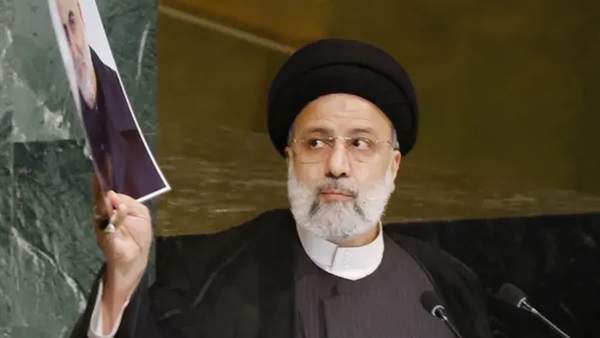The Observer view on averting the west’s collision course with Iran

A ceremony in Tehran last week marking the third anniversary
of the assassination in Iraq by a US drone of Qassem Suleimani, a senior
commander of the Islamic Revolutionary Guard Corps (IRGC), conveyed a defiant
message to the west. “We have not and will not forget the blood of martyr
Suleimani. The Americans must know that revenge is certain and the murderers
will have no easy sleep,” Iran’s hardline president, Ebrahim Raisi, vowed.
Iran has already attempted to avenge Suleimani’s death
through what US officials say was an IRGC plot to kill John Bolton, Donald
Trump’s former national security adviser. It is demanding the arrest of more
than 150 American and British “suspects”, including Trump, who ordered the
drone strike. Tehran has also imposed sanctions on western officials and,
bizarrely, the RAF base at Menwith Hill, North Yorkshire, which it claims
assisted the strike. The UK is expected to follow the US in designating the
IRGC a terrorist group.
The evident depth of anger and enmity felt within Iran’s
regime over Suleimani’s killing and many other long-festering grievances is not
wholly surprising, yet it should give western governments pause. It fuels an
evolving, many-fronted threat to western security interests. It also reflects a
huge strategic defeat: the failure of a decades-long US and Europe-led policy
of engagement and the consequent emergence of the Islamic Republic as an
implacable foe.
Bad blood may be traced back to the 1979 toppling of the
Shah, a key US ally. Israel views Iran as an existential threat. Its backing
for Syria’s dictator and anti-western Shia militias in Lebanon, Yemen and Iraq
is seen as all of a piece.
The risk of open confrontation with the west is further
aggravated by three explosive issues. One is the anticipated collapse of
long-running talks to deny Iran nuclear weapons-making capabilities. If diplomacy
fails, the prospect of military action by Israel is real. A second source of
added tension is Iran’s supply of “kamikaze drones” to Russia for its war in
Ukraine. On Friday, the US slapped yet more sanctions on Iran in bid to curb
this dangerous escalation.
Most threatening of all perhaps, at least from the mullahs’
perspective, is culturally and ideologically destabilising support across the
western world for the ongoing struggle for women’s rights inside Iran – and for
an end to executions, torture, censorship and clerical repression. Like their
peers inside the country, thousands of demonstrators gathered in London this
weekend to demand a new, free Iran. The old order trembles.
Was Iran’s descent into domestic tyranny and international
pariah status inevitable? Moderate presidents Mohammad Khatami (1997-2005) and
Hassan Rouhani (2013-21) encouraged hopes of rapprochement with the west and
more progressive policies at home. That they ultimately failed was in part
attributable to the hostility of hardliners and conservative control of the
Majlis (parliament).
Would-be reformers also struggled with a powerful, corrupt
IRGC and the baleful influence of its chief, the fiercely anti-American supreme
leader, Ayatollah Ali Khamenei. It is at him, principally, that the wrath of
those protesting against the death of Mahsa Amini is aimed. If Iran is to
change, they rightly insist, Khamenei must go.
The regime’s slide into lawless illegitimacy is Khamenei’s
dire legacy. So, too, is a succession of bad foreign policy choices, typified
by his “look east” strategy favouring ties with Russia and China over the west.
Yet policy mistakes and complacency by politicians in the west have also
contributed to the crisis.
Barack Obama tried hard to make engagement work. The result
was the 2015 nuclear deal. But Republicans in Congress blocked the
across-the-board easing of sanctions that Tehran expected. That failure to
deliver undercut Rouhani and the reformers politically as Iranians’ economic
plight inexorably worsened.
Western policy further shredded with the advent of Trump.
Egged on by Benjamin Netanyahu, Israel’s hard-right prime minister, he reneged
on the nuclear deal in 2018. Iran has since greatly increased its
weapons-related capabilities. What Trump and Netanyahu said they most feared –
a nuclear-armed Iran – has been brought closer by their political machinations.
Obama’s decision not to intervene directly in Syria’s civil
war left the door open to the IRGC and its ally, Russia. Likewise, the west’s
failure to seriously address the Israel-Palestine conflict allowed Iran’s
hardliners to grow their influence with Hezbollah in Lebanon and Hamas in Gaza.
Meanwhile, Israel’s escalating “shadow war” brought a series of provocative
assassinations of Iranian officials and scientists.
With Iran now positioned as Russia’s major wartime ally, the
potential for these various strands of conflict to merge into a large
confrontation is obvious. Yet, surprisingly, there is little discussion in
western countries about what to do. Do the US and its allies seek regime change
in Iran? If so, do they plan to actively assist the protesters?
If not, then a rethink is urgently required about how best
to rebuild a constructive dialogue with the majority of Iranians who reject
their country’s increasingly desperate, illegitimate leadership – and dream of
a prosperous, democratic future. What, exactly, is the west’s policy towards
Iran? A fresh start is needed, before it’s too late.





